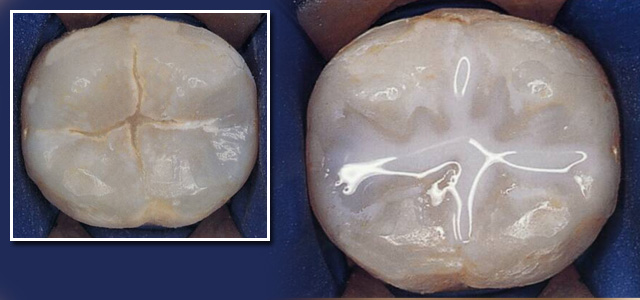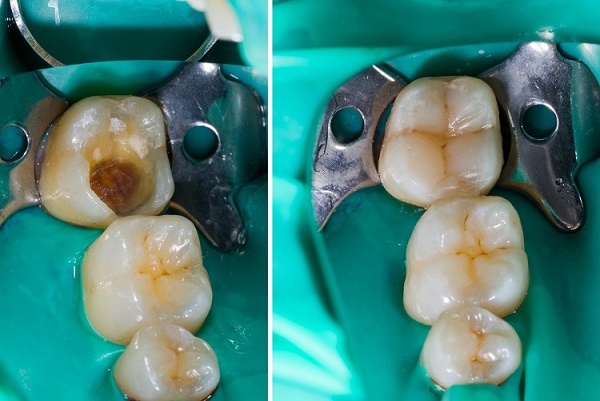Sealants & Fillings
Both fillings and sealants are used to treat the teeth. However, fillings are considered restorative applications. Sealants, on the other hand, are preventive. A filling is used to repair damage that has occurred to a tooth, usually from dental decay. A sealant is used to cover a portion of a tooth to prevent damage from occurring.
Dental Fillings
A filling is necessary to restore a tooth after a cavity or hole has formed from tooth decay. Tooth decay is damage to a tooth’s enamel from oral acids. The acids dissolve the minerals that make up the enamel, such as phosphorous and calcium. This dissolution weakens the tooth enamel and causes holes or cavities to form in the material.
Once a cavity has formed, in order to treat the tooth, the dentist removes the decayed portion of the enamel, cleans the area, and fills in the hole. The filling prevents additional damage to the tooth by blocking the entry of oral bacteria that could cause an infection or greater decay.
Dental Sealants
Sealants may be applied to a tooth that has not suffered any decay. They are usually added to the chewing surfaces of the molars. These areas are deeply grooved and allow food and plaque to easily settle on the teeth. The sealants help fill the grooves, while simultaneously forming a barrier to protect the teeth from oral acids.
Since oral acids are byproducts that are released by the bacteria of the mouth after digestion, the deep grooves of the molars are the perfect setting for decay. Bacteria feed on carbohydrates that are left in the mouth, and the deep crevices trap leftover debris from meals and snacks. The bacteria mixes with the debris to form plaque, which sticks to the teeth and allows the acid to make direct contact with the enamel before the acid is significantly diluted by saliva. As a result, tooth decay is more likely.
Dental sealants shield the tooth enamel from the oral acid and plaque. Thus, the teeth are protected from decay.
Sealants are a tough, plastic material designed to stick to the enamel of the tooth in the grooves where food collects. The tooth is prepared with a special cleanser that is quickly applied then rinsed with water. The sealant material is brushed onto the surface of the tooth and dried with a special curing light to make it hard. The process is very similar to applying nail polish to a fingernail.
During this procedure, the teeth do not need to be numb. Sealants reduce the risk of cavities forming in these grooves, which can be difficult to keep clean. These sealants do not last forever and will need to be replaced as they wear away from the tooth surface. Not all teeth are good candidates for sealants and the doctors will determine which teeth could receive the most benefit from the application.


